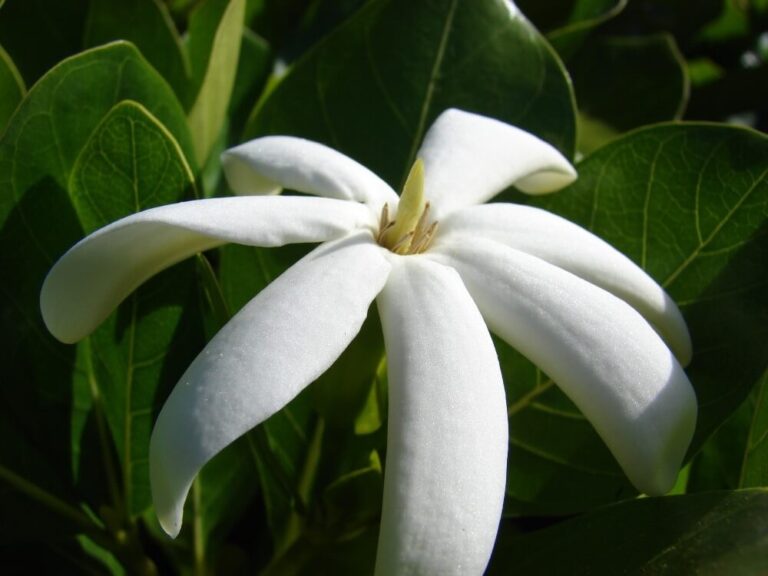27 Different Types Of Fig Trees: From Desert To Mediterranean
The versatility of fig trees is truly remarkable, with species thriving in an astonishing range of environments. From scorching hot deserts to lush temperate climates, and even the salty air near the ocean, these trees have adapted to survive and flourish in diverse conditions. In this article, we’ll delve into the world of fig tree varieties, exploring their unique characteristics and features.
Fig tree identification
Fig trees, a diverse group with numerous species, can thrive in various environments – from the arid desert to the Mediterranean regions. Although all fig trees yield fruit, not every type is suitable for human consumption. In fact, some varieties are best left untouched, as they may not be palatable or even toxic. Therefore, it’s crucial to identify your tree’s species before indulging in its fruit.
Leaves
Fig leaves stand out due to their characteristic small central hole, which allows the fig tree to maximize its exposure to sunlight. This adaptation is crucial for the fig’s survival, as it is a desert-dwelling plant that relies heavily on solar energy. Additionally, the leaves feature tiny bumps that enhance their ability to absorb and utilize light, further emphasizing the importance of this resource in the fig’s ecosystem.
Fruit
The fig tree’s fruit, known as a syconium, stands out for its distinctive characteristic: it’s actually the fruit itself that’s enclosed within the flesh of the tree. This peculiar arrangement allows the tiny flowers inside the syconium to flourish and eventually develop into fruit once they’re successfully pollinated.
Buds
The remarkable characteristics of fig trees become apparent when examining their buds. Unlike other trees, figs produce buds that grow in pairs, each containing a single leaf and a tiny flower. While the flowers will eventually develop into fruit, the leaves remain attached to the tree until the following season, creating an intriguing contrast between the reproductive cycle and the enduring foliage.
Flowers
The intricate world of figs is a fascinating one. At the heart of each fig lies a tiny, inconspicuous flower. This diminutive bloom is nestled within the syconium, where it relies on a unique pollination process. Wasps are the unsung heroes in this scenario, as they deliberately deposit their eggs inside the flower. Once hatched, the baby wasps will embark on a remarkable journey, consuming their way out of the fruit as they emerge into the world.
Fig tree symbolism
For thousands of years, fig trees have held a significant place in human culture due to their connection to fertility. The fruit, shaped like a female reproductive organ, has long been interpreted as a symbol of femininity and the tree itself is often linked to sexual desire. In fact, in various cultures, figs are believed to possess aphrodisiac properties, adding another layer of mystique to this ancient and revered tree.
Fun facts about fig trees
Fig trees hold a unique fascination with the way they produce their flowers. Tucked inside the fruit, these blooms require a specialized pollinator – tiny wasps that venture into the fig to facilitate reproduction. This remarkable process is just one aspect of what makes figs so intriguing. As a type of fig fruit, this plant has evolved over 800 varieties, thriving in arid desert landscapes and Mediterranean climates alike.
Beyond their edible applications in jams, syrups, and vinegars, fig trees have also become symbols of peace and prosperity in many cultures. Bonsai enthusiasts adore them for their versatility, while courtyards and gardens welcome the beauty they bring with their striking leaves and flowers.
Fig Tree Varieties
With over 800 distinct types of fig trees scattered across deserts and Mediterranean climates, it’s no wonder that these versatile plants have captured the hearts of many a gardener and bonsai enthusiast. Among the most popular varieties are the Brown Turkey, Green, Kadota, Mission, and Black Mission fig trees.
While they’re undoubtedly stunning when grown as ornamental additions to courtyards and gardens, their unique foliage and blooms also make them a hit with those who appreciate the art of bonsai. It’s not uncommon for these trees to be planted in areas where their beauty can be fully appreciated.
Adriatic Fig Tree

In the Mediterranean region, a unique type of fig tree stands out – the Adriatic fig. Its distinctive features include a sturdy trunk, dark green leaves, and small, round fruit that transitions from green to purple as it ripens. One of its most impressive qualities is its resilience to cold weather and frost, making it an excellent choice for areas with colder climates.
What truly sets the Adriatic fig apart from other varieties is its production of pinkish-white figs, a characteristic that’s both distinctive and alluring. As this tree matures, it can reach heights of up to 30 feet and spread outwards by about 25 feet. Fig production begins in midsummer and continues until the first frost hits. When it comes to sunlight, the Adriatic fig thrives in either full sun or partial shade conditions.
Alma Fig Tree

In the arid landscape, the Alma fig tree stands out as a resilient and adaptable species. Its long, emerald green leaves and small, deep purple figs are a testament to its ability to thrive in dry climates. This remarkable tree is not only drought-tolerant but also resistant to pests and diseases, making it an ideal choice for areas where other fig trees struggle to survive.
Native to the Mediterranean region, the Alma fig tree boasts a sturdy, thick trunk that grows up to 15 feet tall, supporting leaves that are dark green and glossy. The small, dark purple figs produced by this tree are not only a delight to behold but also a vital source of sustenance for local wildlife.
In addition to its impressive hardiness, the Alma fig tree is also an attractive addition to any garden or landscape.
Its compact growth habit makes it an excellent choice for creating a privacy screen or hedge, while its year-round fruit production ensures a constant supply of nourishment for local birdlife and other wildlife.
Black Mission Fig Tree

The resilient Black Mission fig tree thrives in arid environments, boasting dark green foliage and succulent black fruits when ripe. Its sweet and tangy flavor profile is a treat for those who enjoy its bounty. This adaptable variety can be cultivated both in the ground and in containers. When transplanting, select a spot that receives ample sunlight and prepare a hole twice as deep as the plant’s pot. Gently remove the plant from its container, placing it within the prepared soil.
Fill the space with earth and provide thorough watering to ensure a strong foundation.
Brown Turkey Fig Tree

In arid environments, the Brown Turkey fig tree stands out as an excellent choice. Its extraordinary tolerance for extreme heat and ability to conserve water make it an ideal option for desert climates. When conditions are ripe, this tree yields large, succulent fruits that can be savored fresh or incorporated into various culinary creations.
Caprifig Tree

Caprifig flowers have a unique relationship with a tiny wasp species, Blastophaga psenes. This wasp is responsible for pollinating the caprifig plant. After mating, female wasps lay their eggs inside the fig’s reproductive structures. As the larvae develop, they feed on the seeds of the fig, effectively controlling the spread of the plant.
Celeste Fig Tree

The Celeste fig tree is renowned for its remarkable adaptability to arid desert environments, where it flourishes despite the challenging conditions. Its fruit, a striking violet hue, is also notable for its sweetness.
While the Celeste fig tree can thrive in such harsh climates, it’s equally well-suited to more temperate regions like Mediterranean areas. Here, the trees tend to reach impressive heights and yield copious amounts of figs.
The fruit from these trees typically displays a green or brown coloration and boasts a tangy, acidic flavor profile.
Chicago Hardy Fig Tree
When it comes to shopping for plants, one popular option is Amazon. If you’re in the market for a fig tree that can thrive in colder climates, the Chicago Hardy variety might be just what you’re looking for. This type of fig is renowned for its hardiness, able to withstand cold winter temperatures and still produce fruit. In terms of growing conditions, the Chicago Hardy fig tree tends to do well in the Midwest and Eastern United States, making it a great choice for gardeners in these regions.
The fruits produced by this type of fig are light green or yellow in color, with a sweet and mild flavor profile. One of its most notable features is its large size, which allows it to produce a significant number of figs. If you’re looking for a fig tree that can provide you with a bountiful harvest, the Chicago Hardy variety is definitely worth considering.
Common Fig Tree
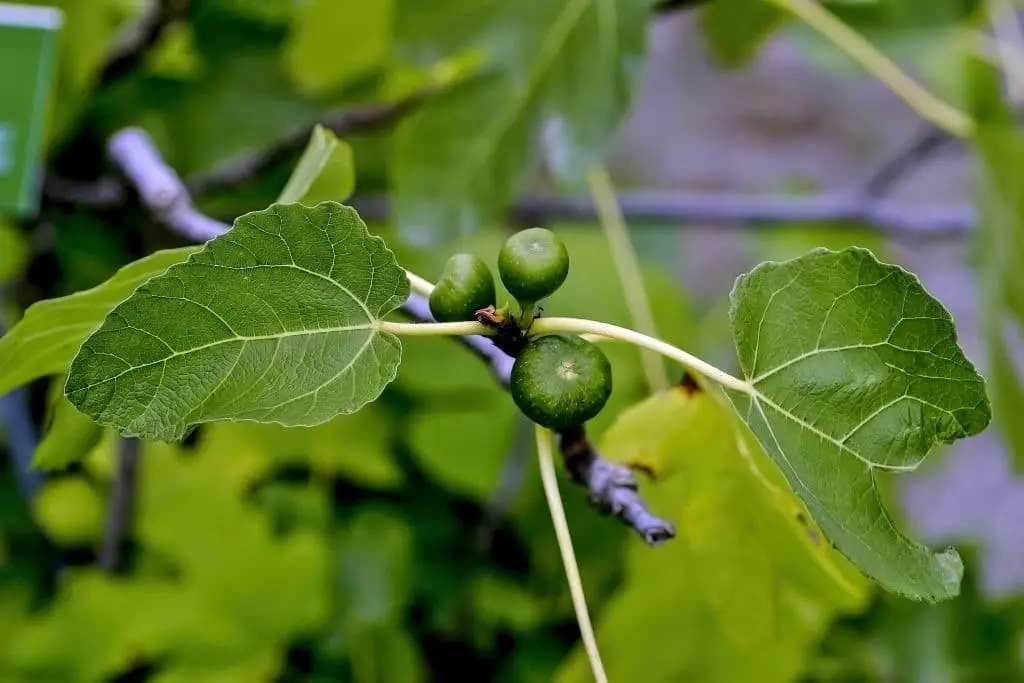
The Common fig tree, the most widely recognized variety, boasts impressive adaptability, thriving in diverse climates worldwide. Its distinguishing feature is the abundant production of large, succulent fruit that ripens to a range of green and brown hues. Notably, this species tends to grow exceptionally tall, yielding an abundance of fruit characterized by its sweet, nutty flavor profile.
Corky’s Honey Delight Fig Tree
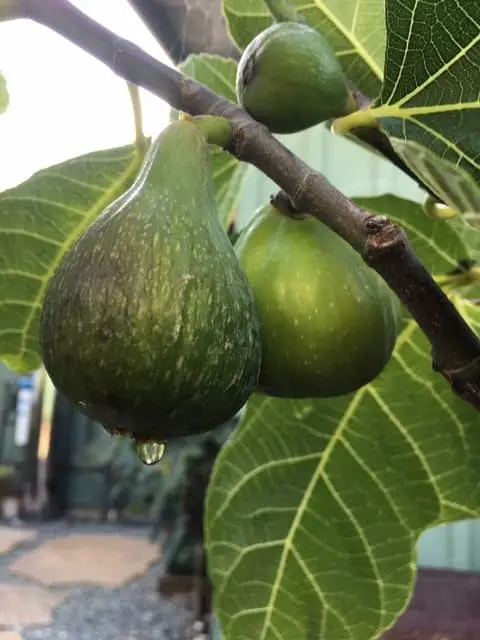
With its striking honey-colored fruit, the Corky’s Honey Delight fig tree is a standout among other varieties. Its unique sweetness is unmatched, making it a treat for anyone who tries it. While it can thrive in diverse climates, this variety excels in warm weather regions where it can reach its full potential. One of its most notable features is its impressive size and prolific fruit production, resulting in an abundance of sweet figs.
The flavor profile of these figs is particularly noteworthy, boasting a rich, honey-like sweetness that’s sure to delight.
Creeping Fig Tree

The Creeping fig tree stands out for its remarkable adaptability, making it an excellent option for gardeners with diverse climate conditions. Its unique ability to thrive in both indoor and outdoor settings has earned it a reputation as a versatile choice. Unlike many other fig trees, the Creeping fig is known to produce small, vibrant green or purple fruits that are not only visually appealing but also boast a subtle sweetness.
Characterized by its low-growing habit and rapid spreading capabilities, this tree is well-suited for indoor gardening enthusiasts seeking a unique addition to their space.
Desert King Fig Tree
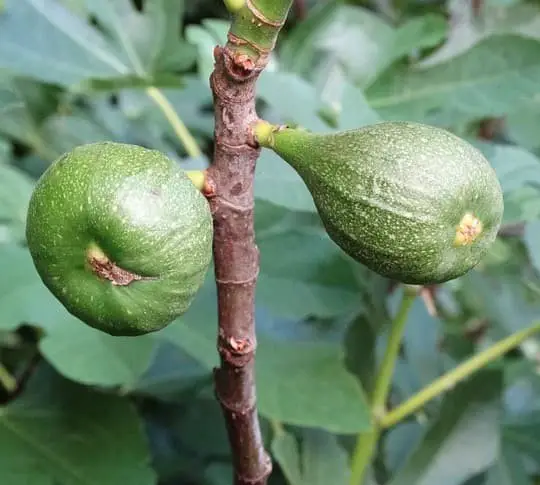
Characterized by its remarkable resilience, the Desert King fig tree is a species that excels in unforgiving environments. While other fig varieties struggle to thrive in challenging climates, this robust tree flourishes, yielding fruit in conditions where others might falter. Its natural habitat typically encompasses the arid regions of the United States, where it thrives despite the harsh conditions.
The fruits produced by the Desert King fig tree are distinguished by their pale green or yellow hue and a sweet, mild flavor profile. Notably, these trees are also notable for their impressive size and remarkable productivity, generating a high volume of figs.
Excel Fig Tree
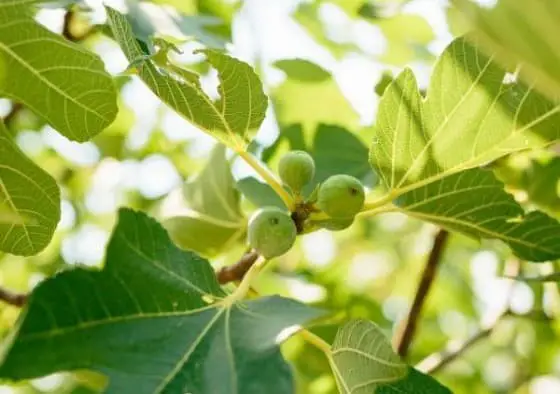
The Excel fig tree stands out for its remarkable resilience, capable of withstanding harsh winters and still managing to bear fruit. Its hardiness also extends to its ability to thrive in regions characterized by cold temperatures. Specifically, this type of fig tree is commonly found in the Midwest and Eastern United States. Notably, it possesses a robust tolerance to drought and can flourish in soil that might be considered less than ideal.
Kadota Fig Tree

In the sun-kissed Mediterranean region, the Kadota fig tree thrives, boasting an array of impressive characteristics. Its robust green leaves stretch towards the sky, while its luscious fruit – a sweet delight for both humans and animals – is renowned for its delectable taste. What’s more, this resilient species has adapted to survive in arid environments with limited water resources, making it an ideal choice for regions prone to drought.
LSU Gold Fig Tree

Indulge in a unique shopping experience on Etsy! The LSU Gold fig tree is an exceptional variety that excels in scorching hot and arid environments. Boasting an impressive heat tolerance up to 100 degrees Fahrenheit, this fig tree can easily thrive without demanding excessive water intake. A true gem for any climate, the LSU Gold fig tree yields delectable, juicy fruit that’s savored by both humans and animals alike.
LSU Purple Fig Tree

For those seeking a versatile and resilient fig tree, the LSU Purple variety checks all the boxes. This hardy species can flourish in both hot and cold climates, making it an ideal choice for gardeners living in USDA zones eight through 11. One of its most notable features is its ability to produce fruit even during the winter months, ensuring a year-round supply of fresh figs.
The LSU Purple fig tree boasts a moderate growth rate, reaching heights of around 15 feet and producing large, sweet, and juicy purple figs. Its robust health means it’s resistant to diseases and pests, reducing maintenance requirements to a minimum. Additionally, this fig tree is drought-tolerant, capable of thriving in areas with limited rainfall. If you’re looking for a low-fuss yet rewarding fig tree that can adapt to various climates, the LSU Purple variety is definitely worth considering.
Olympian Fig Tree

The Olympian fig tree, native to the Mediterranean region, boasts impressive stature, reaching heights of up to 50 feet with its expansive canopy. Its leaves are characterized by their dark green and glossy appearance, while the fruit is large and exhibits a deep purple-black hue.
This hardy plant thrives in hot, dry climates, demonstrating remarkable resilience against drought conditions and a natural resistance to pests and diseases.
As such, it has become a popular choice for landscaping in arid regions, where its adaptability allows it to flourish.
For optimal growth, the Olympian fig tree can be propagated through either seed or cutting methods. Its ideal environment is one of full sun and well-drained soil, making it an attractive addition to any garden or landscape, offering a touch of elegance and beauty.
Osborne Prolific fig tree

The Osborne Prolific fig tree stands out as one of the most widely cultivated and sought-after species globally. Its adaptability allows it to thrive in both scorching hot, arid environments and more temperate Mediterranean climates, making it an attractive option for gardeners across a broad range of latitudes. Reaching impressive heights of up to 25 feet, this fig tree is renowned for its prolific production of succulent, sweet figs.
The Osborne Prolific’s reputation as a low-maintenance yet highly productive cultivar has earned it a loyal following among homeowners seeking a reliable and easy-to-care-for fig tree option.
Panache Tiger Stripe Fig Tree

The Panache Tiger Stripe fig tree stands out from other varieties due to its remarkable ability to flourish in scorching desert environments. Its vibrant striped bark adds an extra layer of visual appeal, making it well-suited for areas with limited water resources. As a result, this variety is highly sought after for cultivation in arid regions where temperatures often soar.
If you’re searching for a fig tree that can withstand the intense heat, the Panache Tiger Stripe fig is an excellent option to consider.
Peter’s Honey Fig Tree
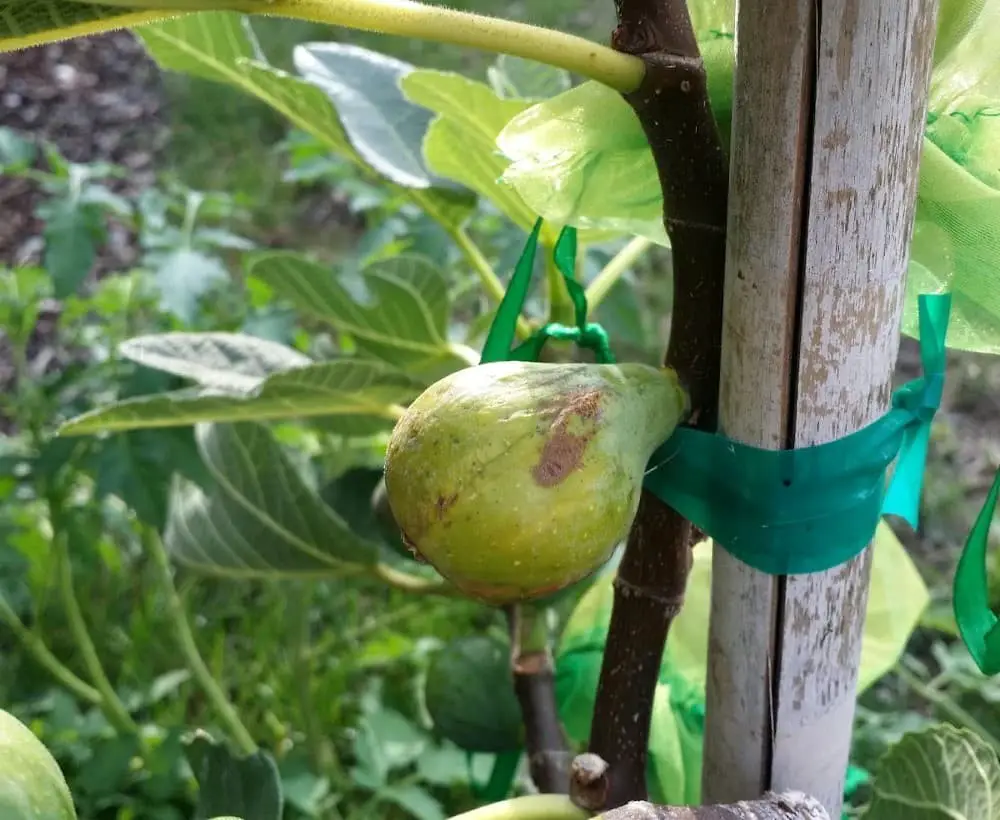
Peter’s Honey Fig Tree is a unique variety that emerged from a natural mutation of the popular Brown Turkey fig tree. Its ideal growing conditions are in USDA hardiness zones 6-9, where it thrives with an upright growth habit. A standout feature of this fig variety is its impressive fruit production – large, sweet figs that turn golden yellow when ripe, perfect for snacking and cooking.
Purple Genca Fig Tree
The purple fig tree is an excellent option for individuals residing in USDA zones nine through eleven. This deciduous tree has the potential to reach heights of up to 20 feet and yields a bounty of sweet and succulent fruit. It thrives in hot, arid climates and demonstrates remarkable resilience by tolerating temperatures as low as 25 degrees Fahrenheit.
Ronde de Bordeaux Fig Tree

The Ronde de Bordeaux fig tree has its roots in the Mediterranean region, boasting a rich history that dates back centuries. In fact, it was even mentioned by Pliny the Elder in his renowned book ‘Natural History’. This iconic variety of fig is characterized by its impressive stature, capable of reaching towering heights of up to 30 feet. The tree’s most striking feature, however, is its succulent fruit, which measures roughly the size of a grapefruit and boasts a deep, luscious purple hue.
The sweet and juicy flavor profile of these figs is nothing short of indulgent, guaranteed to satisfy even the most discerning palates.
San Pedro Fig Tree
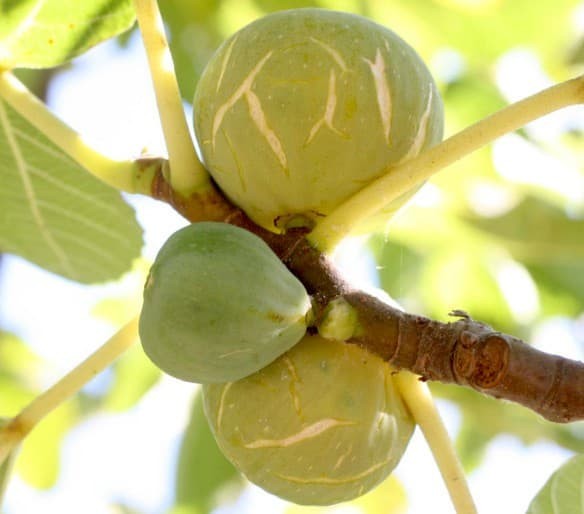
Native to the arid landscapes of the Southwestern United States, the San Pedro fig tree boasts an impressive array of characteristics that allow it to thrive in its natural habitat. Its slender leaves stretch out like fingers, a testament to their ability to withstand the scorching desert sun. The tree’s small, greenish-yellow figs are a delightful contrast to the harsh environment they inhabit.
Moreover, the San Pedro fig tree has adapted remarkably well to its surroundings, showcasing impressive drought tolerance and an uncanny ability to survive in temperatures that would be unbearable for many other plant species.
Smyrna Fig Tree
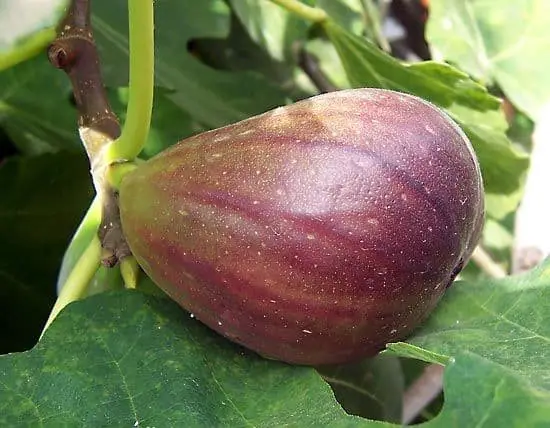
The Smyrna fig tree, native to the Mediterranean region, boasts an impressive array of characteristics that make it a sought-after variety. Its most notable feature is its luscious, sweet fruit, which has earned a reputation for being utterly delicious. As this fig tree can grow quite robustly, it’s not uncommon for it to produce an abundance of fruit, making it a favorite among many.
Violette de Bordeaux Fig Tree
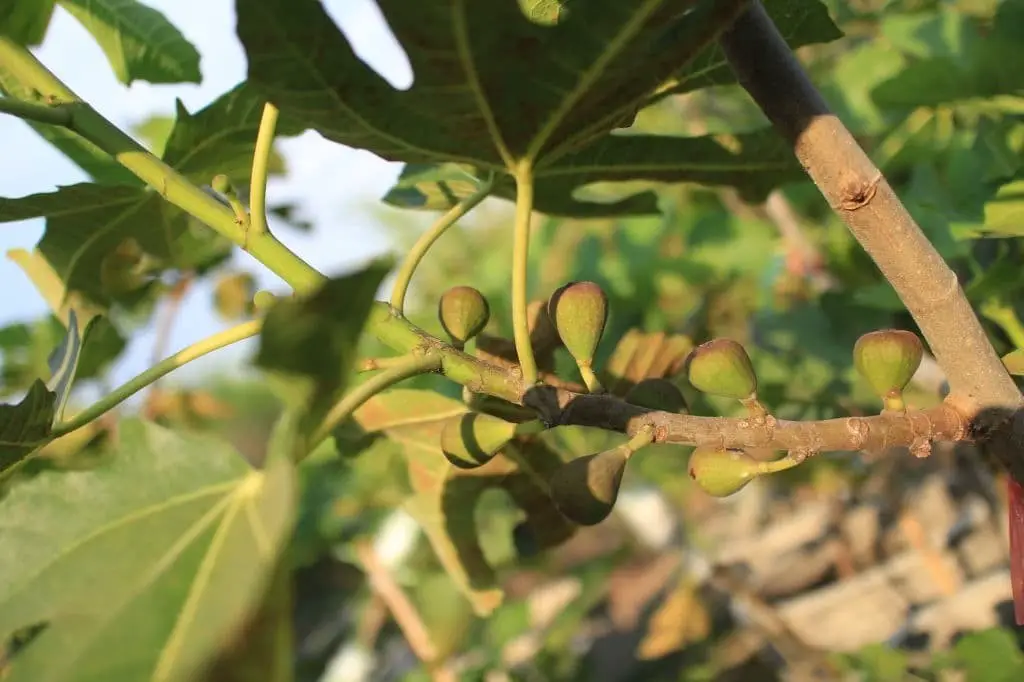
The Violette de Bordeaux fig tree boasts an impressive hardiness, thriving in cold climates where temperatures plummet to as low as -20 degrees Fahrenheit. This remarkable variety is well-suited for gardeners residing in regions with colder winters, offering a reliable and resilient option for cultivating sweet and succulent fruit.
Weeping Fig Tree

In many desert and Mediterranean regions, weeping fig trees thrive as a common sight. Characterized by their slender trunks and drooping leaves, these plants can reach remarkable heights of up to 60 feet. Notably, they also produce figs that vary in color from green to purple hues.
White Genoa Fig Tree
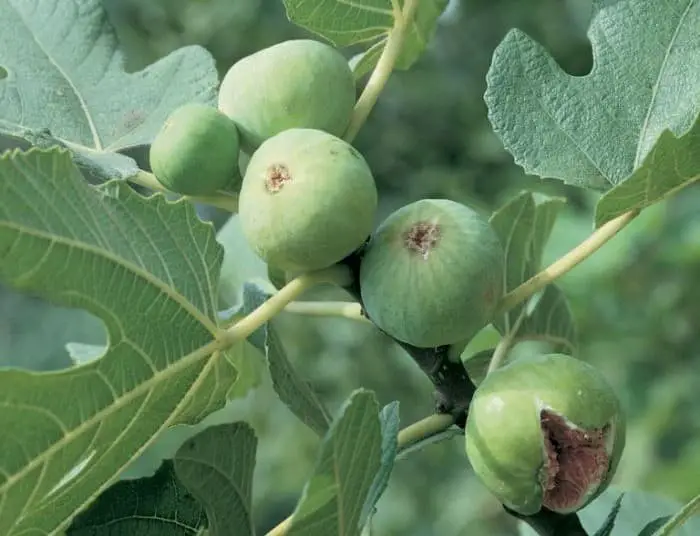
The White Genoa fig tree is renowned for its impressive cold-hardiness, capable of thriving in temperatures as low as USDA zone five. This versatile variety excels in regions characterized by scorching summers and gentle winters. Its most notable feature, however, is the bounty of large, succulent figs it produces, ideal for snacking fresh or incorporating into a wide range of culinary creations.
Yellow Long Neck fig tree
The Yellow Long Neck fig tree, native to the Mediterranean region, boasts a distinctive feature – its lengthy neck. As one might expect, this unique characteristic lends its name. But what’s equally intriguing is the tree’s productivity. It yields an abundance of edible fruit, which undergoes a fascinating transformation from green to yellow as it ripens. For enthusiasts of figs, this variety is a prime choice due to its high yield.
Notably, the Yellow Long Neck fig tree exhibits remarkable drought tolerance, allowing it to thrive in arid conditions. It flourishes in hot, dry climates and can be cultivated in USDA zones nine through eleven.
Where to buy fig trees?
Fig trees can be acquired from various sources such as local nurseries, garden centers, and online platforms. It is crucial to select a fig tree that suits your specific climate and growing conditions. The right variety depends on the temperature range you experience. For instance, if you live in a warm region with minimal or no frost, a desert fig tree would be an excellent choice. These trees are resilient and can withstand temperatures as low as 25 degrees Fahrenheit.
On the other hand, if you reside in a cooler climate, a cold-hardy Mediterranean fig tree would be more suitable. These varieties can tolerate temperatures as low as 15 degrees Fahrenheit. When purchasing a fig tree, it is essential to inquire about its cold tolerance from the seller to ensure the tree will thrive in your environment.
Planting a fig tree
Fig trees can thrive in containers or directly in the ground, provided the right conditions are met. When potting a fig tree, choose a container at least 18 inches deep with drainage holes, ensuring it has sufficient room to grow when fully mature. If planting in the ground, dig a hole twice as wide and just as deep as the pot. Before planting, carefully remove the fig tree from its container, loosening its roots in the process.
Next, place the fig tree in the hole and fill with soil, followed by thorough watering. While fig trees can tolerate partial shade, they tend to flourish in full sun, which also enhances fruit production. When selecting a location for your fig tree, consider providing ample space for it to spread its branches.
Caring for a fig tree
Fig trees are relatively low-maintenance plants that thrive with a simple care routine. When they’re actively growing, they require only occasional watering and fertilization. One key consideration is ensuring the soil drains well, as fig trees don’t tolerate wet conditions. For optimal growth, fertilize your tree once a month with a balanced fertilizer, following the manufacturer’s instructions.
Watering should be done when the top layer of soil feels dry to the touch; avoid overwatering by providing deep but not excessive moisture. In winter, reduce watering frequency or stop altogether in colder climates. When pruning is necessary, focus on removing inward-growing or crossing branches, as these can hinder the tree’s overall health. While pruning isn’t a frequent task, it’s essential to remove any dead or diseased branches to prevent disease spread.
FAQs
What are the different types of fig trees?
While there is a diverse range of fig tree species, two of the most prevalent categories are desert figs and their cold-hardy counterparts.
Where can I buy a fig tree?
For those looking to add a fig tree to their outdoor space, there are several options for obtaining one. In addition to visiting local nurseries and garden centers, you can also find reputable sellers online.
How deep should I plant a fig tree?
When it comes to planting fig trees, you have two options: container gardening or in-ground planting. If you choose to go the container route, select a pot that’s at least 18 inches deep to provide ample room for the tree’s roots to grow. Alternatively, if you’re opting for in-ground planting, dig a hole that’s twice as wide and equally as deep as the pot would be. This will give your fig tree the necessary space to establish itself properly.
How often should I water my fig tree?
When it comes to watering your fig tree, a simple rule of thumb is to wait until the top layer of soil feels dry to the touch. This approach ensures that the roots receive sufficient moisture without leading to overwatering issues. During the winter months, you can further reduce the frequency of watering, as the tree’s growth tends to slow down and it requires less sustenance.
How much fertilizer should I give my fig tree?
To ensure optimal growth and fruit production, fig trees benefit from regular fertilization. For best results, apply a balanced fertilizer containing equal parts of nitrogen, phosphorus, and potassium (such as 20-20-20) once a month. Be sure to follow the manufacturer’s instructions for application rates and timing.
Do fig trees need to be pruned?
While fig trees don’t require frequent pruning, it’s still essential to remove any dead or diseased branches to maintain their overall health and appearance. Additionally, you can prune branches that are growing inwardly or crossing each other to promote a more balanced and structured growth habit.
What is the best way to propagate a fig tree?
For those seeking to expand their fig collection, two primary methods exist for propagating this delightful fruit-bearing tree: rooting cuttings and direct seeding. The most straightforward approach involves taking a cutting from a thriving fig tree and encouraging it to develop its own roots. Alternatively, one can try their hand at planting fig seeds, providing the necessary conditions for them to germinate and grow into a new tree.
What are the coldest temperatures a fig tree can tolerate?
When it comes to selecting a fig tree, it’s essential to consider its hardiness level, particularly if you live in an area with chilly winters. Mediterranean region fig trees are surprisingly resilient and can thrive in temperatures as low as 15°Fahrenheit (-9°C). To ensure you’re getting a tree that can withstand the cold, be sure to inquire about its tolerance when purchasing from a seller. This knowledge will help you provide the best possible environment for your new addition to flourish.
How long does it take a fig tree to bear fruit?
While the exact timeframe for a fig tree to bear fruit can vary, most plants typically start producing fruit within a remarkably short period of two to three years after planting. However, it’s not uncommon for some fig trees to take slightly longer to reach this milestone.
What is the difference between a desert fig and a cold-hardy fig?
While many fig species thrive in tropical climates, some varieties have adapted to survive in arid desert environments and even braved sub-zero temperatures. Desert-dwelling figs, for instance, have evolved to tolerate scorching heat, while their cold-hardy counterparts can withstand temperatures as low as 15 degrees Fahrenheit.
Conclusion
Fig trees are a fascinating element to incorporate into any outdoor space. A large flowering plant with over 900 recorded varieties worldwide, Ficus carica thrives in diverse climates and regions. While some varieties grow as small shrubs, others can reach impressive heights depending on the region they’re cultivated in. Notably, certain types of fig trees yield edible fruit, while others provide ornamental foliage for a beautiful garden display.
Considering the specific climate you’ll be planting in will simplify the selection process when the time comes to plant this spring.
Related Posts
Discovering the wonders of an online plant nursery isn’t just about finding the perfect tree for your property. With a vast array of species to choose from, you can create a unique landscape that showcases the beauty of nature. From apple trees to evergreens, each variety offers its own set of characteristics and benefits. For those looking to pursue a career in tree care, becoming an arborist is a rewarding path.
Not only do trees play a crucial role in enhancing your home’s appeal, but they also have a profound impact on the overall property. By understanding how trees can boost your home’s value and learning how to properly remove them, you’ll be well on your way to creating a thriving outdoor space. In addition to exploring the world of arborists, we’ll delve into the benefits of growing specific plants like the lady palm and organic blueberry plants in your garden.

